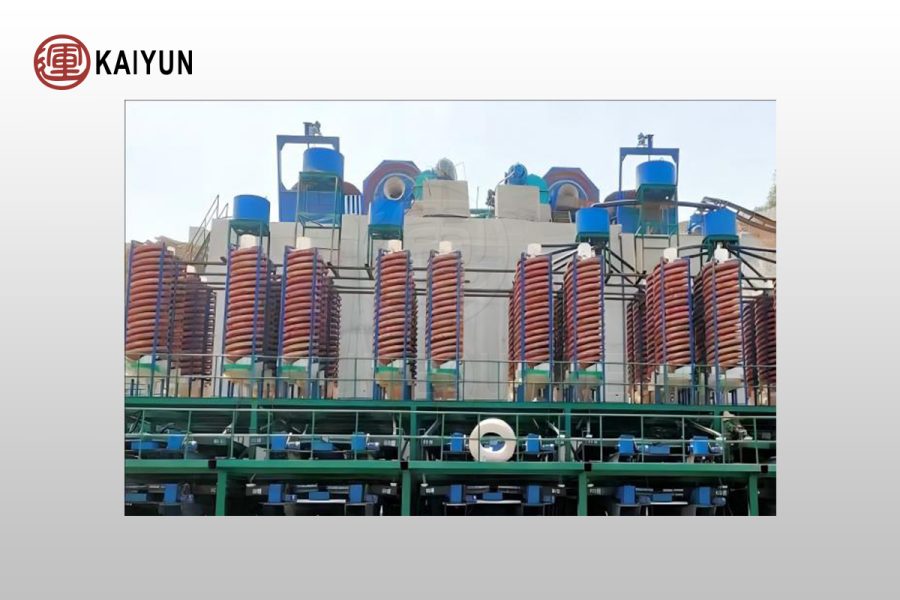The ore re-selection process consists of a series of continuous operations. The nature of the operations can be divided into three parts: preparation operations, selection operations and product processing operations.

(1) Preparation operations for re-selection
Includes:
① Crushing and grinding to separate useful mineral monomers;
② Washing and desludging of colloidal or clay-rich ores;
③ Screening or hydraulic classification methods to classify the selected ores according to particle size. After the ores are classified, they are selected separately, which is conducive to selecting operating conditions and improving the selection efficiency.
(2) Selection operations for re-selection
It is the main link of ore selection.
The selection process can be simple or complex: the simple one consists of unit operations, such as heavy medium separation. The process for processing sand ore is also relatively simple, often without crushing and grinding operations, but only consists of a few re-selection operations. When dealing with unevenly embedded vein ores, a staged selection process is often required, and the internal structure is relatively complex. The reasons are as follows:
① Different process equipment should be used to process ores of different particle sizes;
② When using the same type of selection equipment, if the ore particle size range is wide, it should also be graded for selection;
③ The enrichment ratio or tailing reduction capacity of most re-selection equipment is not high, and qualified products can only be obtained after multiple selection or sweeping
The number of selection stages and internal structure of the process are related to the output conditions of the ore, the particle size of the mineral embedding, the value and content of the useful components, etc.
When dealing with lean sand ores, the roughing stage should be as simple as possible to discard as many tailings as possible.
When dealing with cheap and large-volume iron and manganese ores, the process should not be too complicated.
For vein ores containing high-value non-ferrous and rare metals, in order to avoid over-crushing losses caused by one-time grinding, a staged selection process is generally adopted.
The determination of the number of selection stages also needs to consider the production scale to make the benefits and consumption compatible.
The process structure of each separation stage (number of concentration and scavenging, direction of intermediate ore) is related to the metal content of the selected ore and the quality requirements for the product (product structure) and other factors:
Gravity separation equipment often produces a variety of products with different qualities (mixed concentrate, secondary concentrate, rich intermediate ore, poor intermediate ore, etc.), which need to enter the next separation stage or return for processing.
Product merging principle:
The principle is similar quality.
Equipment configuration principle:
Coarse and scavenging operations: select equipment with large processing capacity but low sorting accuracy;
Selection operations: select equipment with small processing capacity but high enrichment ratio.
(3) Gravity separation product processing operations
Mainly include concentrate dehydration, tailings transportation and storage:
Concentrate dehydration:
Gravity separation concentrate basically does not contain ore mud, and dehydration operation is relatively easy.
Coarse and medium-grained concentrates: remove surface water by infiltration in the ore trough or on the slope;
Fine and micro-fine particles: need to be filtered;
If the product needs to be bagged and exported, it should also be dried.
Tailing transportation:
Coarse and medium-grained tailings: can be directly loaded and transported;
Fine and micro-fine particles: use sand pumps to discharge to the tailings dam for storage.
Wear-resistant measures:
During the process connection and product processing and transportation of gravity separation production, in order to avoid the wear of hard and coarse particles in the slurry on the open trough and pipeline, the following measures are often taken:
Open trough: wear-resistant cast stone lining on the inner surface;
Pipeline, sand pump: cast stone powder lining on the inner wall;
Bend pipe: rubber pipe fittings can be used for parts with severe wear